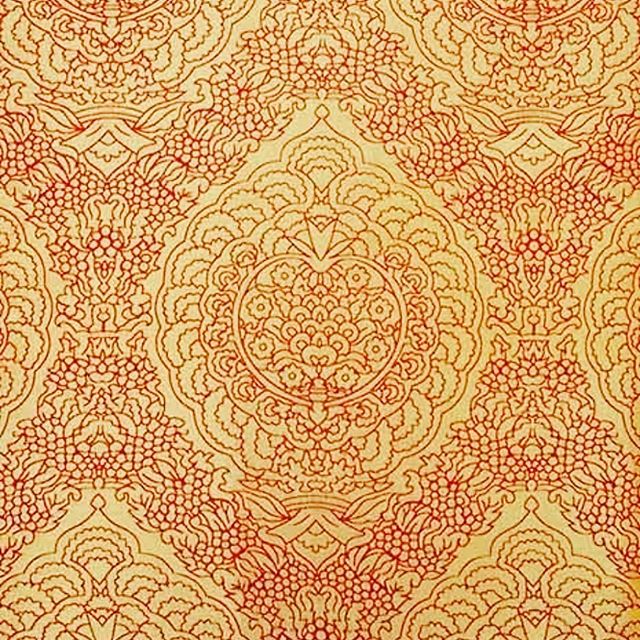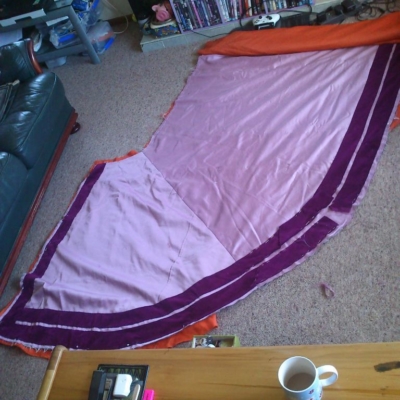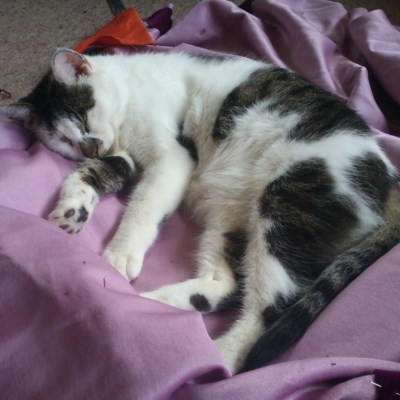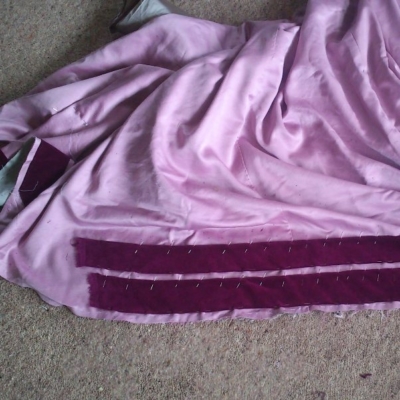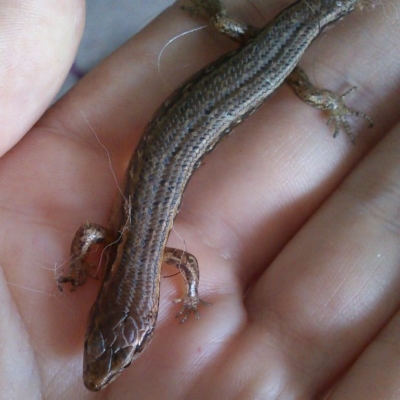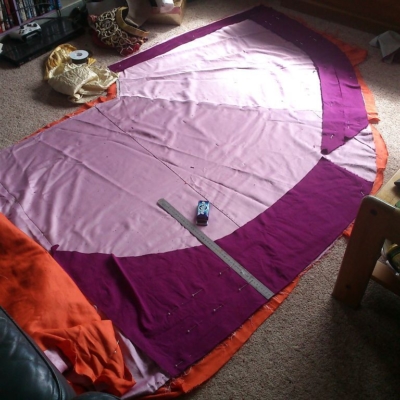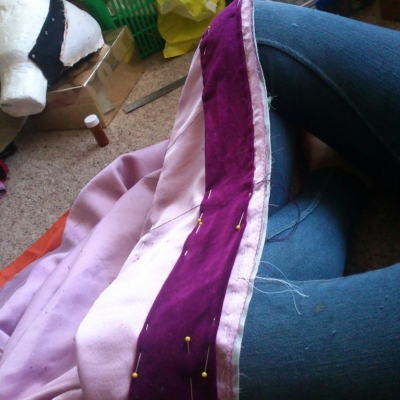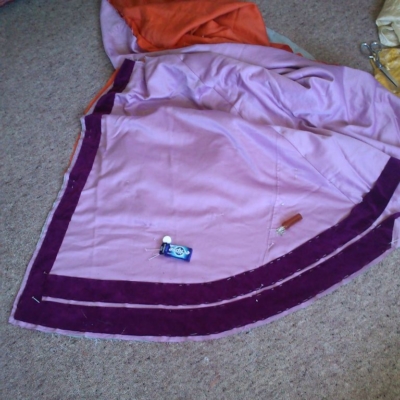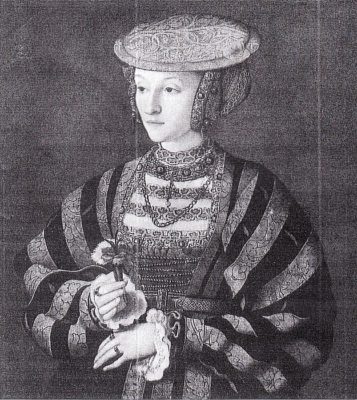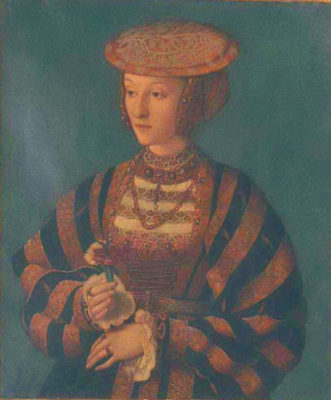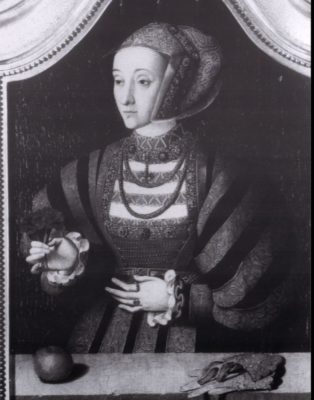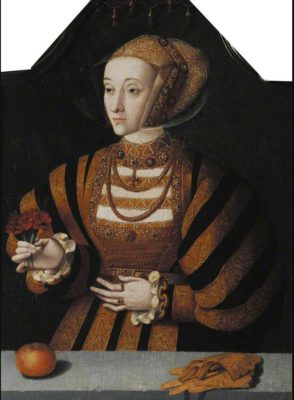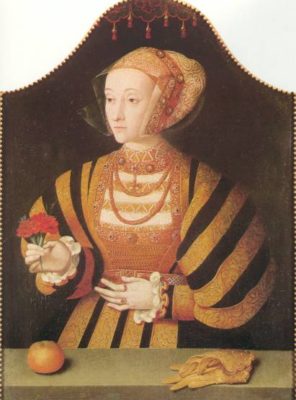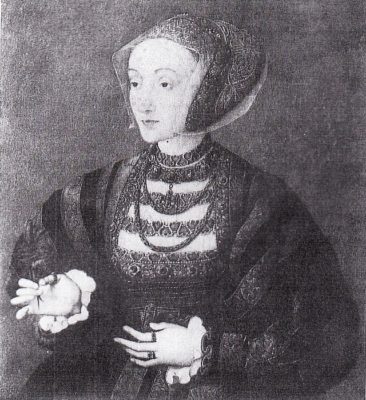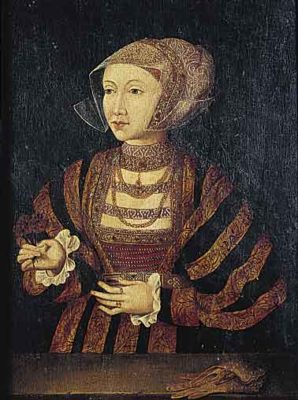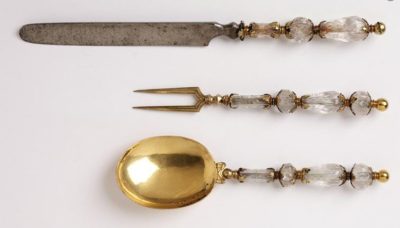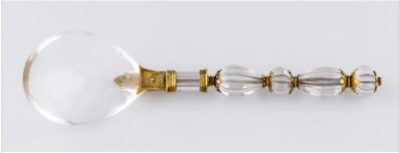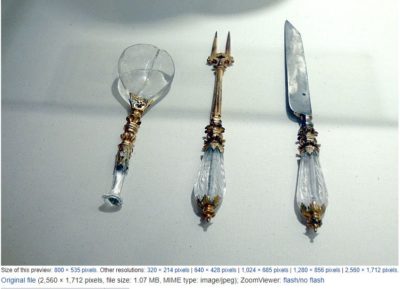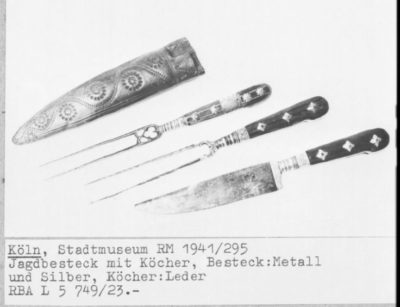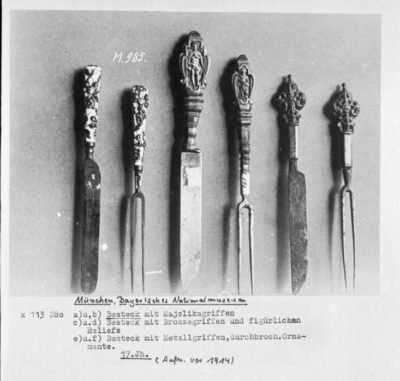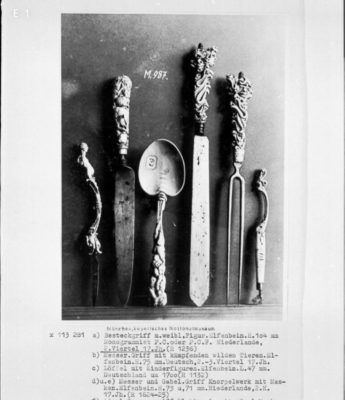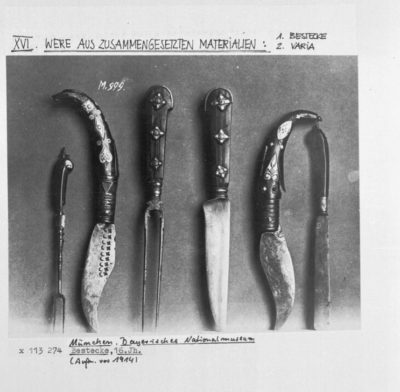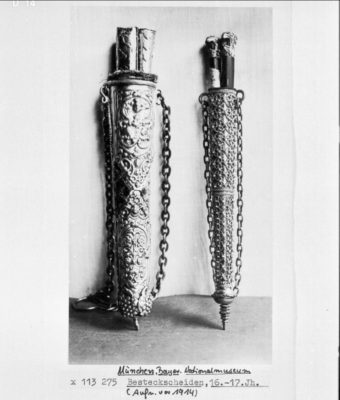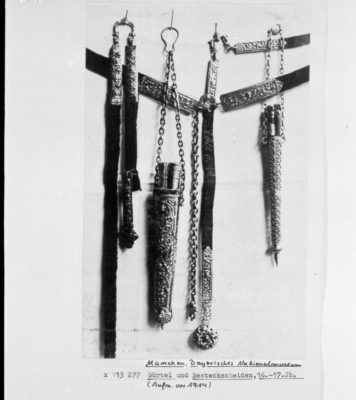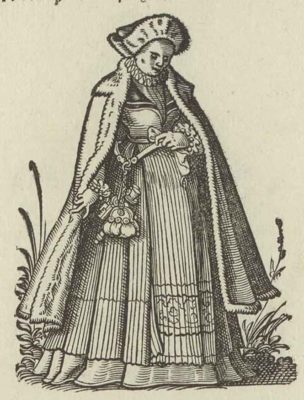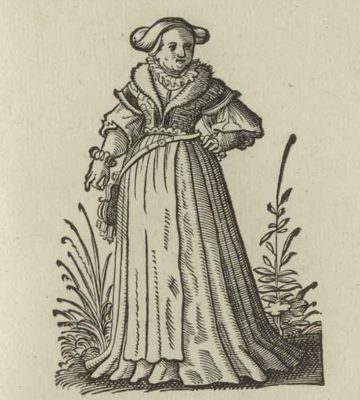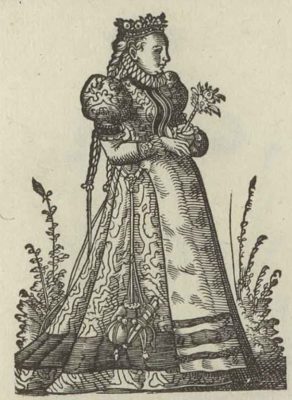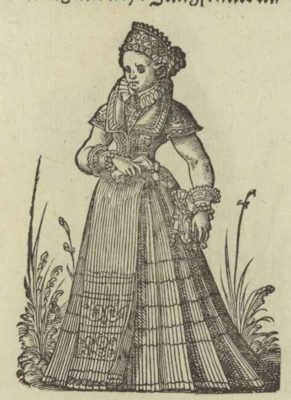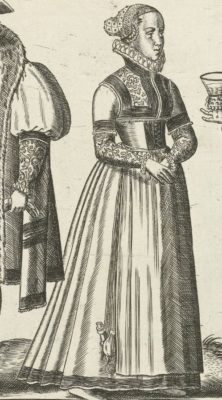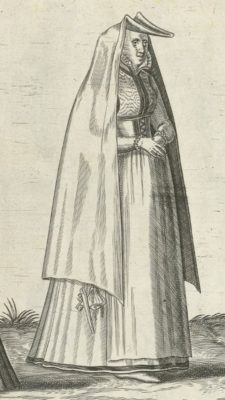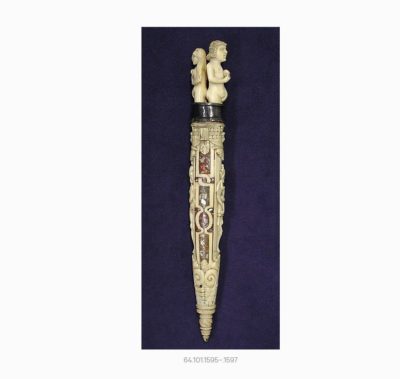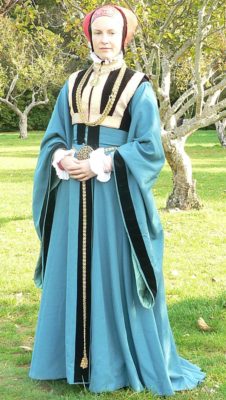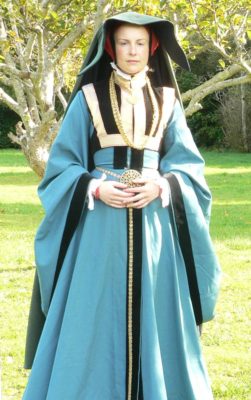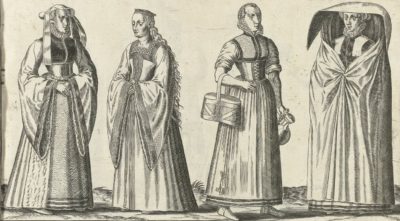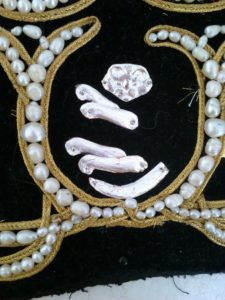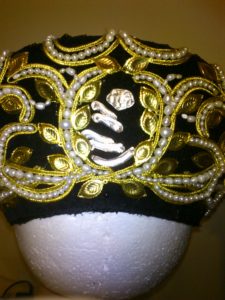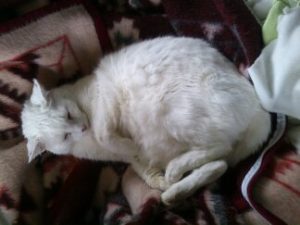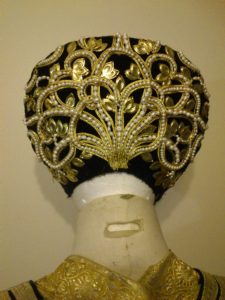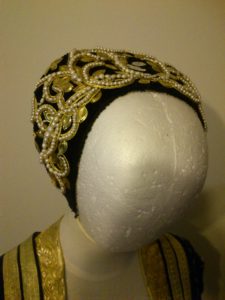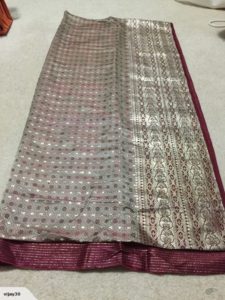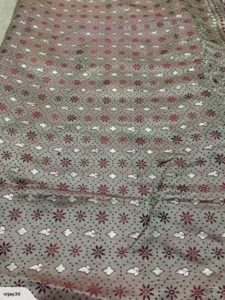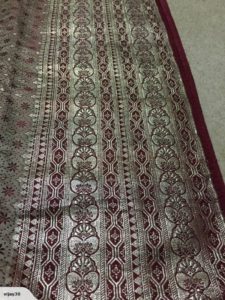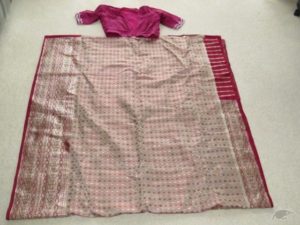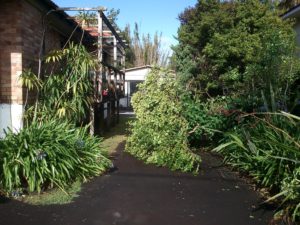easy mantua cutting
(updated on my research site: https://www.thefrockchick.com/the-baroque-frock/easy-mantua-cutting/ )
I did manage to cut my fabric panels for my mantua, it really is pretty darm easy as it is all on the grain rectangles. It is pretty much exactly what I expect from a pre-1920s measure, cut, fit process. It looks a bit different but ultimately it’s a case of wait to floor, shoulders to waist and that’s it. Everything else is adjustable to suit.
I knew I wanted my side extensions to be only one full width of fabric (so two widths of a more in era width. I cut (tore) one width from waist to floor plus a hand width for turnings. Then folded on the diagonal to form the two side extensions.
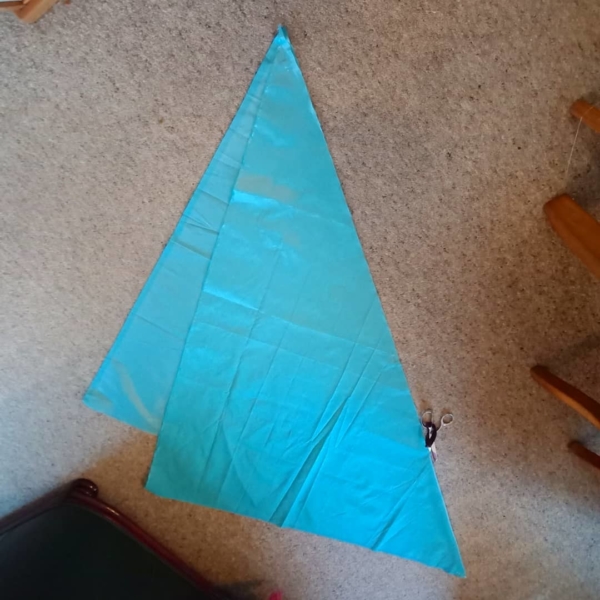
The underskirt is cut from three drops of fabric as these tend to be between 5-7 widths of in era fabric widths. I will wind up with side openings which will allow me to wear pockets underneath. The Henri Bonnart illustrations show a lot of openings for pockets.
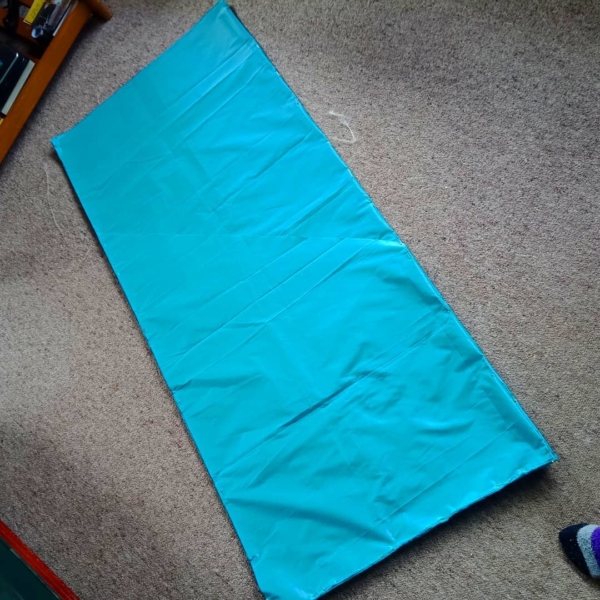
The front of the robe was cut from one full width of fabric as long as from my shoulder to floor plus two hand widths. One hand width is to extend the fronts over the shoulder, the other is for turning.

To cut the back panel I laid the extensions next to the front panels and lined up the remaining fabric from top of the front panel down to waist and then followed the diagonal of the side extensions.
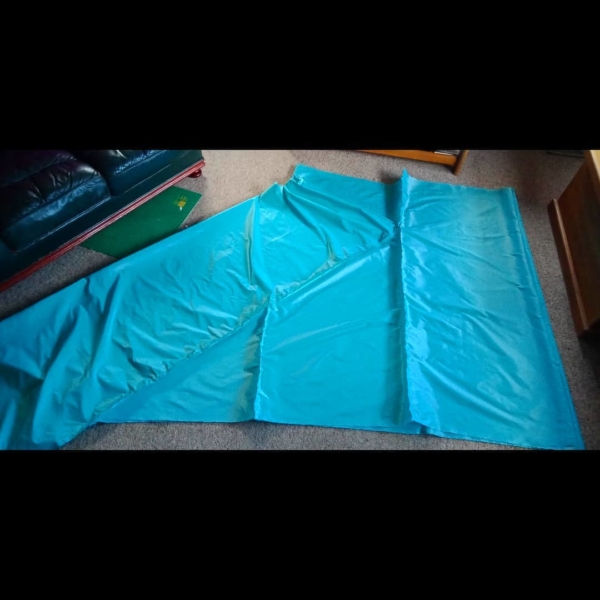
I didn’t want a very long train so I cut a curve about 3-4 hand widths.
The rest of the fabric will be used for sleeves and facings.
Since these I have machine stitched the joins and pressed them back ready for stitching. I haven’t yet done so as I need to really look through the Diderot stitches. Okay. Not totally clear but:

The Encyclopedia of Diderot & d’Alembert Collaborative Translation Project.
PLANCHE IX.
Tailleur d’habits et tailleur de corps
Livre L’Encyclopédie. [38], Arts de l’habillement : [recueil de planches sur les … Diderot, Denis (1713-1784)
https://gallica.bnf.fr/ark:/12148/bpt6k9978d/f46.item
Points de couture.
Fig, 1. 2. & 3. Elévation & places de dessus & de dessous du point de devanten piquant les deux étoffes de haut-en-bas & de bas-en-haut.
Fig, 4. 5. & 6. Point de côté ramenant le fil en-deffous par-dehors après avoir piqué les deux étoffes.
Fig, 7. 8. & 9. Point-arriere ou arriere-point, repiquant de haut-en-bas au milieu du point-arriere après avoir piqué de bas-en-haut.
Fig, 10. 11. & 11. Point lacé comme le point-arriere, lieu qu’il fe fait au- en deux tems, revenu en-hauton ferre le point, & retournant l’aiguille on repique en-arriere commeau précédent.
Fig, 13. 14. & 15. Point à rabattre fur la main piquant le haut-en-bas & de bas-en-hauten-avant les points drus espacés & également.
Fig, 16. 17. & 18. Point à rabattre fous la main commele dernier au-lieu qu’ayant percé l’étoffe supérieure on pique-l’étoffe inférieure par-dehors, ensuite on pique les deux en remontant.
Fig, 19. 20. & 21. Point à rentraire comme le point à rabattre fur la main se faisant en deux tems en retournant l’aiguille avant tout il faut joindre à point fimple les deux envers l’étoffe retournée on ferre de ce point les deux retours il faut pour cela très-peu d’étoffe &les points très-courts.
Le point perdu n’eft qu’un point-arriere ajouté au precédent.
Fig, 22. 23.& Point traversé, couture à deux fils croisés.
Fig, 25. A, premiere opération; point coulé ou la passe, c’eft la boutonniere tracée de deux fils. B, la passe fermée du point de boutonniere. C, la passe achevée & terminée de deux brides à chaque bout quel’on enferme de deux rangs de points noués
Google translated:
BOARD IX.
Sewing stitches.
Fig, 1. 2. & 3. Elevation & places from above & from the fronten point pricking the two fabrics from top-to-bottom & bottom-to-top.
Fig, 4. 5. & 6. Side point bringing the wire in-bursts from outside after stitching the two fabrics.
Fig, 7. 8. & 9. Point-back or back-point, pushing up and down in the middle of the back-stitch after dipping from below upwards.
Fig, 10. 11. & 11. Point laced like the point-back, place which it is made in two tenses, returned to the top, turns the point, and turning the needle backwards.
Fig, 13. 14. & 15. Point to be folded on the hand, stitching up-down and down-up in front of the thick points spaced & equally.
Fig, 16. 17. & 18. Point to be folded in the hand as the last one instead of having pierced the upper stuff, the lower stuff is thrown out, then the two are stitched upwards.
Fig, 19. 20. & 21. Point to point as the point to be folded on the hand being done in two times by turning the needle before all must be joined at the same time the two to the returned fabric we iron this point both returns require very little material and very short points.
The lost point is only a back-point added to the previous one.
Fig. 22. 23. & Crossed point, cross-stitched seam.
Fig, 25. A, first operation; cast point or the pass, it is the buttonhole traced two sons. B, the closed pass of the boutonniere point. C, the pass is completed & completed with two straps at each end which enclose two rows of knotted stitches
Google translate can’t really understand it. But I am no better off reading heh translation here: https://quod.lib.umich.edu/d/did/did2222.0000.178?view=text;rgn=main
Figures 13. 14. and 15. Overhand hem stitch piercing from top-to-bottom and from bottom-to-top in front, the stitches densely spaced and even.
The Encyclopedia of Diderot & d’Alembert Collaborative Translation Project.
Figures 16. 17. and 18. Underhand hem stitch [is] like the last, except that having pierced the upper fabric one pierces the lower fabric at the outside, one pierces the two together fortifying.
http://hdl.handle.net/2027/spo.did2222.0000.178

https://quod.lib.umich.edu/d/did/did2222.0000.178?view=text;rgn=main
The Encyclopedia of Diderot & d’Alembert Collaborative Translation Project.
PLANCHE X.
Livre L’Encyclopédie. [38], Arts de l’habillement : [recueil de planches sur les … Diderot, Denis (1713-1784)
https://gallica.bnf.fr/ark:/12148/bpt6k9978d/f46.item
Fig, 1. 2. & 3. Points noués simples de neuf différentes formes.
Fig, 4. Points noués doubles de trois différentes sortes.
Fig, 6. & 7. Points croisés de simples & doubles de neuf différentes sortes.
Google translation:
Fig, 1. 2. & 3. Simple knotted stitches of nine different shapes.
Fig, 4. Double knotted stitches of three different kinds.
Fig, 5. 6. & 7. Cross points of single & double of nine different
kinds.
To be honest it is the section on linen items that has nice clear hemming illustrated.

https://gallica.bnf.fr/ark:/12148/bpt6k9978d/f46.item
PLANCHE Iere.
Livre L’Encyclopédie. [38], Arts de l’habillement : [recueil de planches sur les … Diderot, Denis (1713-1784)
https://gallica.bnf.fr/ark:/12148/bpt6k9978d/f46.item
FIGURES
Fig, 1. Le point de surjet.
Fig, 2. Le point de côté.
Fig, 3. Le point-arriere ou arriere-point:
Fig, 4. Le point devant.
Fig, 5. La couture rabattue.
Fig, 6. Le point noué ou point de boutonniere.
Fig, 7. Le point de chaînette.
Fig, S. Le point croisê.
Fig, 9. Peignoir en pagode:
Fig, 10. Bonnet piqué.
Fig, 11. Coëffure de dentelle.
Fig, 12. Coëffure à deux rangs ou à bavolet.
Fig, 13. Grande coëffe en mousèline. A coëffure en papillon sur une tête de carton.
Google translation:
FIGURES
Fig, 1. The overlock stitch.
Fig, 2. The side point.
Fig, 3. The rear-end or back-point:
Fig, 4. The point in front.
Fig, 5. The seam folded.
Fig, 6. The lockstitch or boutonniere.
Fig, 7. The chain stitch.
Fig, S. The point crossed.
Fig, 9. Bathrobe in pagoda:
Fig, 10. Quilted hat.
Fig, 11. Scallop Coif of lace.
Fig, 12. Coeffure Coif with two rows or bolster.
Fig, 13. Large mussel cockerel mouseline coif. A butterfly coif on a cardboard head.
